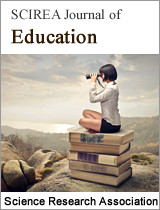Barriers to the development of electronic textbook publishing from the economic and cultural perspectives
DOI: 323 Downloads 17734 Views
Author(s)
Abstract
Purpose- this paper aims to investigate the barriers of the development of e-textbook publishing from the cultural and economic perspectives and to propose appropriate strategies for improving it and resolving the current problems in Iran. Method/approach of research-A field survey was conducted among 294 students, experts, managers, and publishers of e-textbook. In order to analyze data, one-sample t-test and confirmatory factor analysis were used by LISREL and SPSS software. Findings- From the experts’ viewpoint, the components of “production” (with an average of 23), “distribution” (with an average of 26), and “sales” (with the average 22) from the economic perspective and the components of “cultural institutions” (with an average of 22), “digital literacy” (with an average of 16) and the “culture-making” (with an average of 18) from the cultural perspective were lower than average level of 50. It means that the respondents are not satisfied with the current status of cultural and economic components.Conclusion- The majority of respondents had negative opinion about the current status of the components. In other words, all the economic components (production, distribution and sale) and cultural components (cultural institutes, digital literacy and culture-making) has a high capacity for the development of electronic publishing. Major problems in the industry include book auditing and the weaknesses of related regulations, economic barriers (high costs of production, distribution failures, and inadequate advertisement), the weakness of public culture, the lack of digital libraries, and the lack of technical and cultural facilities of publishers.
Keywords
Analog publishing, Electronic publishing, Digital media
Cite this paper
Parisa Mehrani Adl,
Barriers to the development of electronic textbook publishing from the economic and cultural perspectives
, SCIREA Journal of Education.
Volume 1, Issue 1, December 2016 | PP. 99-116.
References
| [ 1 ] | Besen, S. M. and Kirby, S. N. (2012), E-Books and Libraries: an Economic Perspective, Prepared for the American Library Association, September 2012. Available at http://creativecommons.org/licenses/by/3.0/ |
| [ 2 ] | Carreiro, E. (2010), Electronic Books: How Digital Devices and Supplementary New Technologies are Changing the Face of the Publishing Industry, 26 (4), 219-235. |
| [ 3 ] | Chen, Y. (2003), Application and development of electronic books in an e-Gutenberg age", Online Information Review, 27 (1), 8-16. |
| [ 4 ] | Claypool, J. (2011). “Publishing e-books: challenges and perspectives.” In Price, K. and Havergal, V. (Eds.). e-books in libraries: a practical guide. London, U.K.: Facet Publishing |
| [ 5 ] | Collis, B. (1999). Designing for differences: Cultural issues in the design of WWW-based course-support sites. British Journal of Educational Technology, 30(3), 201-215. |
| [ 6 ] | Department of Education. (2011). Digital promise. Retrieved from http://www.whitehouse.gov/the-press-office/2011/09/15/fact-sheet-digital-promise-initiative |
| [ 7 ] | Grigson, A. (2011). “An introduction to e-book business models and suppliers.” In Price, K. and Havergal, V. (Eds.). e-books in libraries: a practical guide. London, U.K.: Facet Publishing |
| [ 8 ] | Henderson, L. (1996). Instructional design of interactive multimedia. Educational Technology Research and Development, 44(4), 85-104. |
| [ 9 ] | Herlihy, C. S. and Yi, H. (2010), E-books in academic libraries: how does currency affect usage?, New Library World, 111(9/10), 371–380. |
| [ 10 ] | Hutsko, J. (2012),"Are E-Readers Greener Than Books?" Green Are EReaders Greener Than Books Comments. New York Times, 31 Aug. 2009. Web. 11 Nov.. |
| [ 11 ] | Liu, X., Liu, S., Lee, S. H. & Magjuka, R. J. (2010). Cultural Differences in Online Learning: International Student Perceptions. Educational Technology & Society, 13 (3), 177–188. |
| [ 12 ] | LIU, Z. (2012), Is it time for wider acceptance of e-textbooks? An examination of student reactions to e-textbooks, National Science Library, Chinese Academy of Sciences, 5 (3), 76–87. |
| [ 13 ] | Lopatovska, I., Slater, A., Bronner, C., Mimouni, H. E., Lange, L., and Orlofsky, L. (2014), In transition: academic e-book reading in an institution without e-books, Library Review, 63(4/5), pp.261-275. |
| [ 14 ] | Maxim, A. and Maxim, A. (2012), The role of e-books in reshaping the publishing industry, Procedia-Social and Behavioral Sciences, 62, 1046-1050. |
| [ 15 ] | McLoughlin, C. & Oliver, R. (2000). Designing learning environments for cultural inclusivity: A case study of indigenous on-line learning at tertiary level. Australian Journal of Educational Technology, 16(1), 58-72. |
| [ 16 ] | Mussinelli, C. (2010), Digital Publishing in Europe: a Focus on France, Germany, Italy and Spain, Publishing Research Quarterly, 26 (3), 168-175. |
| [ 17 ] | Reeder K., Macfadyen L. P., Chase M., & Roche J. (2004). Falling through the (cultural) gaps? intercultural communication challenges in cyberspace. Retrieved on March 2, 2010 from: https://circle.ubc.ca/bitstream/handle/2429/1329/ ReederCatac.pdf?sequence=1 |
| [ 18 ] | Reeves, T. (1992). Effective dimensions of interactive learning systems. Proceedings of Information Technology for Training and Education Conference (ITTE '92) (pp. 99-113). St. Lucia, Brisbane: University of Queensland. |
| [ 19 ] | Rich, M. (2010). “Math of Publishing Meets the E-Book,” New York Times, February 28, 2010. Available at http://www.nytimes.com/2010/03/01/business/media/01ebooks.html. |
| [ 20 ] | Rohn, U. (2010), Cultural Barriers to the Success of Foreign Media Content, Frankfurt am Main, Berlin, Bern, Bruxelles, New York, Oxford, Wien. |
| [ 21 ] | Shapiro, F. (2011). Summary of Senate Bill 6. Retrieved from http://www.capitol.state.tx.us/BillLookup/BilSummary.aspx?LegSess=821&Bill=SB6 |
| [ 22 ] | Waller, D. (2013), Current Advantages and Disadvantages of Using E-Textbooks in Texas Higher Education, Focus on Colleges, Universities, and Schools, 7(1), 1-6. |
| [ 23 ] | Weible, C. L. and Sullivan, H. F. (2012), E-ILL and Russian e-books, Interlending & Document Supply, 40 (3), 140-143. |

